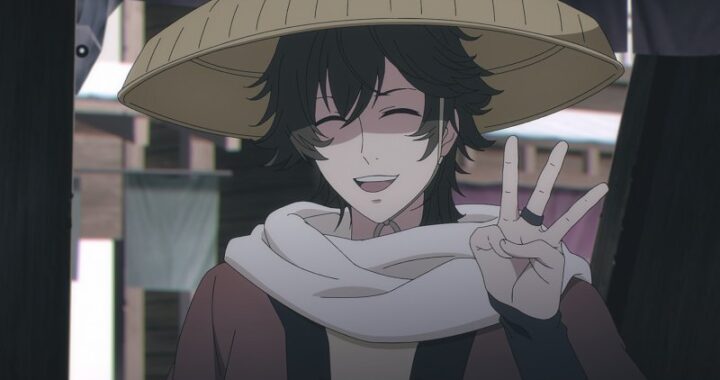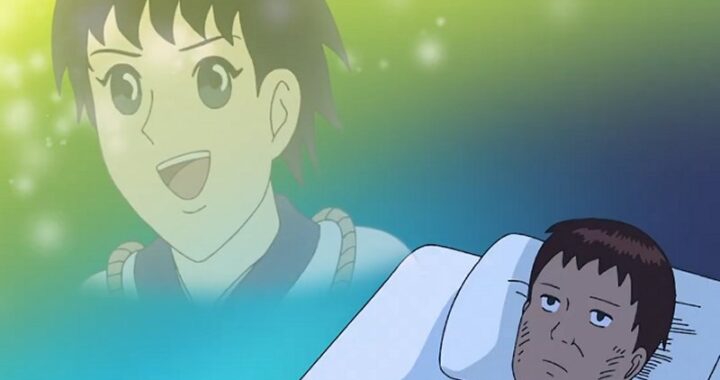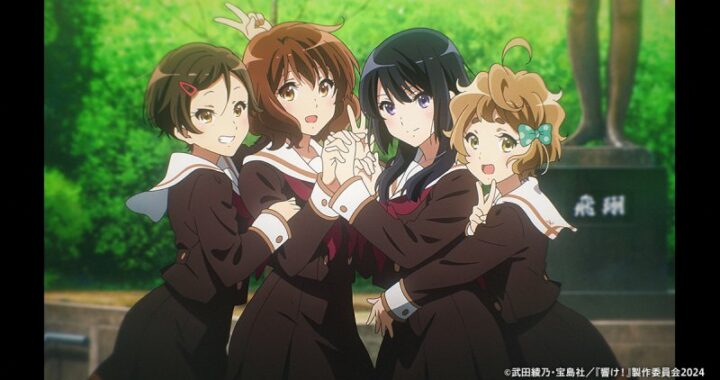GBS: Ah, sleep, perchance to dream. There do seem to be an awful lot of endings that show characters asleep, from the stalker cam first ending of the first Hayate the Combat Butler series to the peaceful (or is it?) slumber of the characters involved in mass psychosis in Paranoia Agent to the sexy slumber of the girls of Mysterious Girlfriend X, which comes with bonus drool.
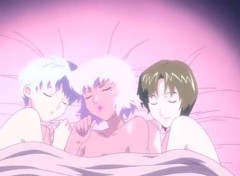
BT: Bet I can do without the drool. (Like the dress, though.) The classic one for me in this “genre” of endings may be The Legend of Black Heaven’s trio of inept alien girls asleep together, as we slowly pan out to a bubbly little song about bikinis, or something. But, hey, there is a wider variety of this type. A few that use static images—Seven of Seven comes to mind, all seven Nanas all curled up together. And reminiscent of Paranoia Agent’s ring of sleepers is the one for Rumiko Takahashi Anthology, showing its own group of misfits asleep around a tree. I guess “ending” with sleep just makes thematic sense for many ending sequence creators.
If characters aren’t sleeping, they may still be in the right setting. Like Samurai Flamenco’s second ending, featuring the show’s idol trio, Mari, Moe, and Mizuki, of Miracle Mineral Muse, in colorful poses in bed, talking to each other on their phones—ending with them all quite asleep. Still shots, except for the dream-like paperdoll dancing, but with very artful editing and effects. The show’s addictive sugar-pop first ending, Date Time, edited similarly and another showcase for the girls, I like a little more—some of the best design you’ll see without full animation—but that just gets into flat-out fun (and cute) endings.

GBS: There are so many endings that just do crazy, fun, or cute stuff that make them interesting by themselves. Last season, I really loved the ending to Hozuki no Reitetsu, mentioned already. One that’s cute and has a wacky song to boot is the ending to Koihime Musou, where we see super-deformed versions of the main characters eating at an inn, with all of the other characters coming in and out of the frame, acting according to their personalities. Though perhaps my favorite unusual ending is probably that to Maria†Holic. I’m not a big fan of the show, but the 8-bit adventure game ending (which makes slight adjustments for each episode, so technically there is more than one ending animation, something we’ll talk about in a bit) set to a cover version of Yellow Magic Orchestra’s Kimi ni, mune kyun sung by the show’s main characters is mesmerizing and fun to watch.
BT: Now, if you want to pivot to pure craziness and fun—which is somewhat more rare in endings, I’ll grant—a couple specific, and very different, examples come to mind. First, typical of Ufotable’s style, there’s the super-catchy and completely silly ending to Ninja Nonsense. Special because it’s all stop motion—and even seems to present a unique routine familiar from the show itself, of Onosokumaru causing havoc (with panties on his head, natch).
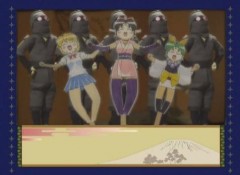
Second, I have to go with where the real craziness in anime is these days, in the short format. Another brilliant, and more straightforward, homage to classic 8-bit gaming, from Ai Mai Mi. Set to the super-catchy and super-fast Girigiri Saikyou Aimaimi, sung by our unhinged trio as we see them one by one fail as the 30-second ending winds down. (I’ve probably failed at some of those same games.)
BG: I like endings that present us with cute little side stories. The Tenchi franchise has two examples of this. One is the first OVA ending which shows Ryo-Ohki tending a field of carrots over the season and has some amusing visual gags like showing her balloon up in size as she tries to eat a giant carrot. One of the two alternating Tenchi Universe ending sequences showcases Ryoko and Ayeka’s rivalry in a volleyball match, which is a good fit with the song used, Up-walk in Galaxy. Despite the rivalry, it ends on a feel-good note of friendship.
GBS: Ones that tell their own little story, which includes a few of those noted above like Hozuki and Ninja Nonsense in addition to the Tenchi examples are some of the more interesting ending sequences out there. The ending is more than just a platform for showcasing the credits, but a treat for the fans who watch it.
G.B. Smith
Greg Smith has been writing anime reviews and a review column on anime dubbed into English for several years, first at AnimeOnDVD and now for The Fandom Post. His occasional column on English anime dubs, Press Audio, appears whenever he comes across a dub worthy of a closer look. He is also the deputy editor for our seasonal and year end retrospectives.


